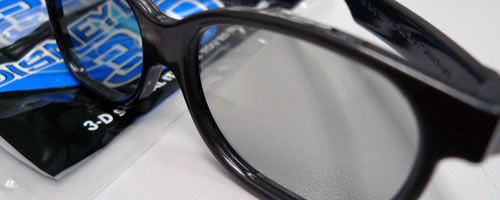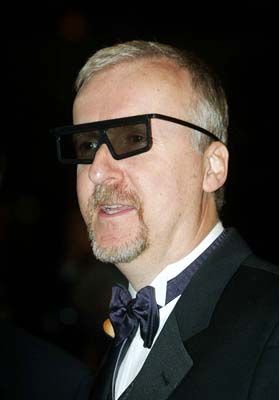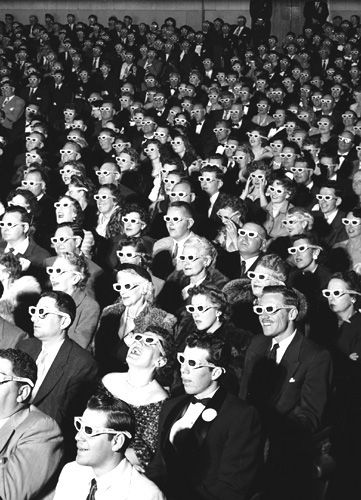Three-dimensional films have existed in some kind of form since early in the 20th century. The first "official" 3D film with a paying audience was The Power of Love in 1922. They truly became a huge part of the movie watching experience in the 1950s with films like It Came From Outer Space (1953) and Creature from the Black Lagoon (1954). In the fifty plus years that followed, mediocre attempts at 3D films have come and gone without leaving much of an imprint on how the entertainment industry approached filmmaking.
It's no secret that the 2009 release of Avatar, the highest grossing film of all time, has officially changed the way the industry is viewing the entire film production process. The film that took over 15 years to complete has the studios and their filmmakers scrambling to deliver what they feel the public now expects: more groundbreaking and visually engulfing, 3-D films. The uncanny success of Avatar has caused most of Hollywood to jump to conclusions over 3D films. But with the onslaught of reality 3D (Jackass 3, U2 3D, Phish 3D) and the rising cost of producing these films, where should it stop?
More on the debate over 3D films, including comments from James Cameron and Michael Bay, and also, why we should all be looking forward to the filthy world of Jackass flying at our faces after the jump.
In an interview with Deadline this week, both James Cameron and Michael Bay spoke out over Hollywood's sudden urge to convert a plethora of films into 3D. Using Toy Story and the CGI craze that followed as an example, Cameron discussed the resulting difference between shooting a film with 3D in mind and simply converting a 2D film into a 3D in post-production:
"After Toy Story, there were 10 really bad CG movies because everybody thought the success of that film was CG and not great characters that were beautifully designed and heartwarming. "Now, you've got people quickly converting movies from 2D to 3D, which is not what we did [with Avatar]. They're expecting the same result, when in fact they will probably work against the adoption of 3D because they'll be putting out an inferior product." Cameron does, however, feel that the conversion can be done properly, which he announced he will attempt with the release of Titanic in 3-D in 2012. In an interview with USA Today, Cameron took a stab at the rushed process of converting the upcoming, Clash of the Titans to 3D,
"They're converting Clash of the Titans in eight weeks. But I'm guessing six months to a year to do it right. We're targeting spring of 2012 for the release (of a 3D version of Titanic), which is the 100 year anniversary of the sailing of the ship."
Despite Cameron's warning, the success of Tim Burton's Alice in Wonderland, which was converted to 3D, has only added fuel to the fire. However, there is a noticeable difference. A reviewer from Film Junk had this to say, "[Alice in Wonderland's] end result is that the world does not feel quite as fully realized and as immersive as Avatar. Granted, it is a more stylized world, but Wonderland is somehow not quite as enthralling as Pandora. At times the environments feel a bit washed out and empty, which could be a result of the 3-D not meshing well with some of the darker colors."
Some directors are being forced by the studios to work in 3D against their own wishes. The Wall Street Journal recently reported that "for big-budget movies that come with a global audience, a 3D version may increase a film's profits by about 25%", so you can't really blame the studios for this demand.
Deadline reports that Michael Bay toyed with the idea of shooting in 3D for Trasnformers 3, but ultimately found the process to take away from how he likes to shoot, citing the size and weight of the cameras as being a nuisance during his action scenes. As far as converting the film to 3D in post-production, Bay had this to say,
"I'm used to having the A-team working on my films, and I'm going to hand it over to the D-team, have it shipped to India and hope for the best? This conversion process is always going to be inferior to shooting in real 3D. Studios might be willing to sacrifice the look and use the gimmick to make $3 more a ticket, but I'm not. Avatar took four years. You can't just shit out a 3D movie. I'm saying, the jury is still out."
Reportedly, it can cost anywhere from $100,000 to $120,000 per minute to convert a film. Seeing as how most movie theaters can only handle a handful of 3-D films at a time, this surge created by the sudden 3D craze might backfire. Last week, Collider reported that theaters are already bumping up ticket prices to almost $20. It's probably a move to help the theaters accommodate more 3D films, as well as help studios recoup the money from the high production costs. This might not seem so bad until you consider that a night out at the movies could cost a family of four close to $100. And that's without any refreshments!
There's no denying that Avatar was an incredibly innovating, movie-watching experience. It made me feel like I was actually inside the film in my own private world. I nearly forgot I was in a theater with a bunch of people. If I believed all films were capable of producing a similar experience, I would be all for 3D and paying a little more for that experience. As of now, I'm pretty skeptical. 2010 is starting to look like it will be the year of the 3D film, so I guess I'll save my judgment after I check out a few more. That being said, I think attending a 3D version of a stupid-fun movie like Jackass 3 can and will be insanely entertaining. I just apologize to you in advance if you're sitting next to me as I attempt to duck out of the way of Steve-O's projectile vomit.




.jpg)

